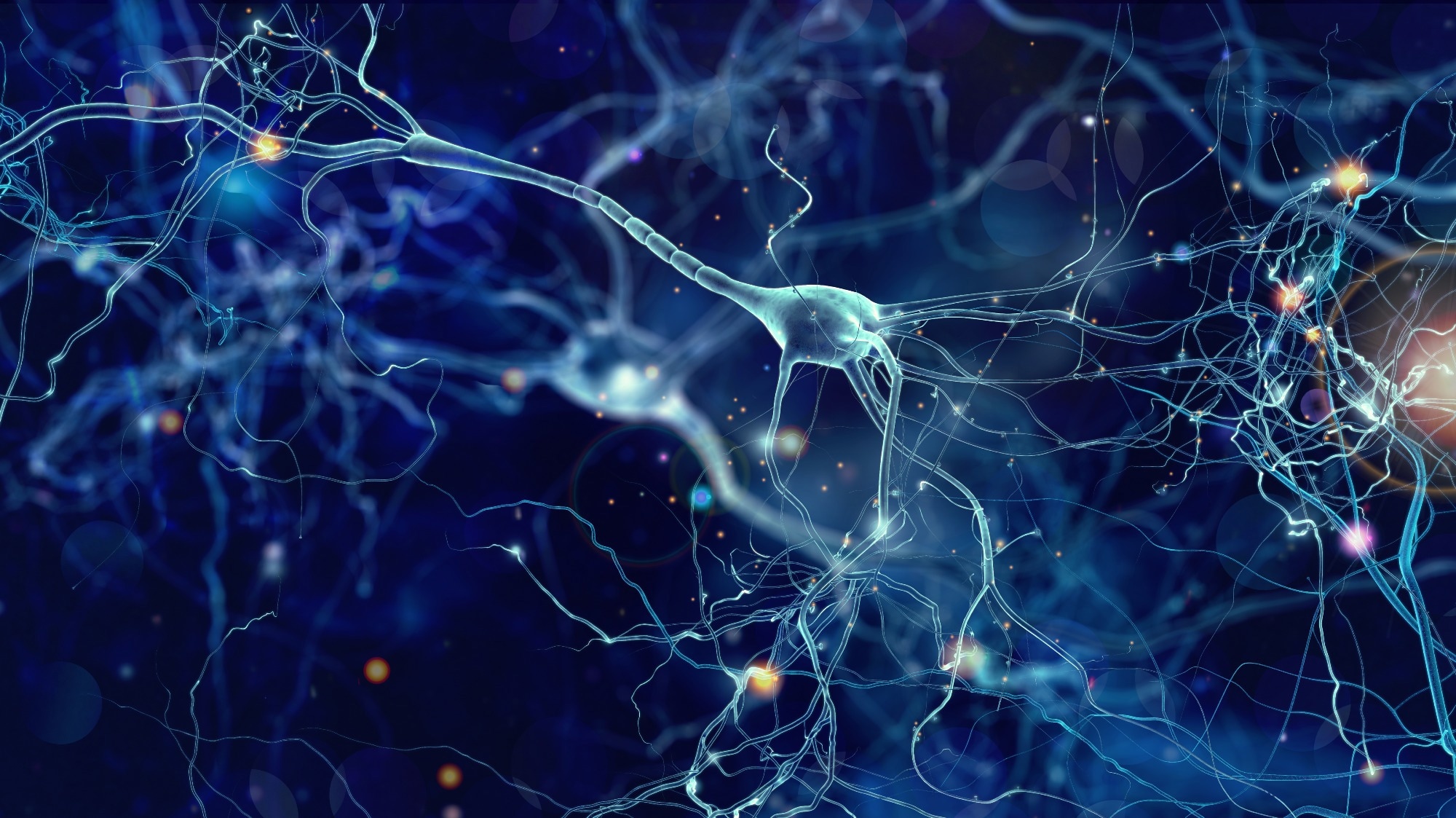After a recent visit to ELRIGs Drug Discovery 2023, News-Medical sits down with Dr. Federico Dajas-Bailador, a leading expert in axon biology and drug discovery. In this interview, we delve into his innovative work, the potential it holds for the future of drug discovery, and its profound implications for the treatment of neurological disorders.
Can you provide an overview of your experience and background in research and drug discovery, including any specific areas of expertise or research interests?
My lab primarily focuses on neuroscience, but we approach problems from the perspective of axon biology. We're deeply interested in how neurons develop, undergo polarization and establish/maintain connectivity. This understanding helps not only in the development of the nervous system but also sheds light on age-related degeneration linked to the loss of axon connectivity.
We use various cellular models, such as compartmentalised microfluidic neuronal cultures, to study how axons face different environments compared to cell bodies. Within this context, our research is focused on RNA biology, specifically the role of non-coding RNAs or microRNAs in regulating local axon protein synthesis. This knowledge is especially valuable when exploring different diseases and conditions like pain or neurodegeneration.
How important are events like Drug Discovery from the perspective of academia, and why? What do you aim to get out of being here at Drug Discovery 2023?
Events like ELRIG 2023 are incredibly insightful. Although I'm aware of the academia-industry interface through collaborations, for instance with Eli Lilly, attending such events on a larger scale opens up a new perspective. The goal is to bridge the gap between fundamental science academics and the broader investment realm without losing focus on the core mechanisms. By attending, I hope to identify more opportunities for collaboration and application.
Your research has focused extensively on axon biology and small non-coding RNAs (sncRNAs). Can you explain why the study of sncRNAs in axons is significant and how it impacts our understanding of neuronal function? What impact does this have on drug discovery?
As an analogy, when the axon is scaled up to be the arm in a human body, you can think of the axon length in relation to the neuron's cell body as the equivalent distance from Nottingham to Paris. This significant length poses a logistical challenge for the neuron. For proteins to be expressed at the axon terminal, which is distant from the cell body, there's a requirement for translation regulation. In other words, there is a need for descentralized gene expression.
Here, small non-coding RNAs play a pivotal role. Our work on microRNAs has shown their importance in spatial-temporal control of gene expression. This research aligns with the current interest in RNA biology and offers potential avenues for drug discovery, especially given the advances in RNA technologies post-covid.
 Image Credit: whitehoune/Shutterstock.com
Image Credit: whitehoune/Shutterstock.com
Collaboration has played a significant role in your research career. Can you highlight some of the most impactful collaborations you've had and how they have contributed to your research in axon biology?
A significant collaboration is with the Versus Arthritis Pain Center in Nottingham, in particular with Vicky Chapman and Gareth Hathway. Initially, my work wasn't focused on pain research, but joining forces with experts from this center led half of my lab's work to be directed towards pain-related projects.
Another meaningful collaboration involves studying motor neuron diseases alongside Prof. Rob Layfield and Dr. Dan Scott. This collaboration allows us to leverage our expertise in RNA and neuron development and apply it to conditions like motor neuron disease.
In your work, you've explored the molecular mechanisms underlying neuronal sensitization in sensory neurons. How does this relate to your broader research on axon biology, and what are the potential clinical implications?
At its core, pain involves sensory neurons that extend axons from their cell bodies into peripheral tissues and the spinal cord. Understanding these sensory terminals, especially their responses under various conditions such as inflammation, is pivotal.
Our Axon-RNA-centric approach allows us to detect RNA changes and leverage them to alter sensitized states, providing a more accessible avenue for drug targeting.
Could you provide some insights into the potential applications and implications of your research for the broader field of neuroscience, neurology and drug discovery?
In a typical neuron, the cell body comprises only about 10-20% of the cytoplasm; the rest lies in the axon and dendrites. Thus, understanding neurons requires acknowledging the axon's role. We advocate for the research focus to consider this polarization and complex structure.
By highlighting different transcriptomics within axons versus cell bodies and targeting their regulation, we can influence the entire neuron's functioning, potentially transforming treatment approaches.
As an Associate Professor and Principal Investigator, what advice do you have for aspiring researchers and students seeking a career in neuroscience or related fields?
Success in research demands passion. It's crucial to find a subject that genuinely interests you and dedicate yourself to it.
While there may be long periods where the efforts don't seem to yield desired or meaningful outcomes, perseverance is key. When success does come, it's a deeply rewarding experience. Hold onto that feeling.
With emerging fields like AI and machine learning, how are these technologies being integrated into your research and drug discovery to accelerate the identification of potential drug candidates?
While we've initiated dialogues on integrating AI, it hasn't transformed our work yet. However, I see it as a significant tool, especially for handling and processing big data. AI can help bridge the expertise gap in understanding both bioinformatics and biological terms, aiding in the efficient mining of information.
Could you discuss any ongoing or future research projects that you are particularly excited about in the field of axon biology and sncRNAs?
Certainly. We're keenly exploring extracellular vesicles as mediums for cells to communicate. These cell made vesicles often carry microRNAs and other non-coding RNAs, presenting a unique avenue to understand how neurons modulate their environment, which is especially interesting in neurological conditions.
We are exploring extracellular vesicles as these tools with which cells can communicate and transfer gene expression patterns. And we're looking at, for example, how early life brain tumours such as medulloblastoma can impact neuron development and activity and how this can affect later life pain processing and neurological conditions.
This has been possible via funding from the Medical Research Foundation, which supported a big collaboration between the labs of Gareth Hathway, Beth Coyle, Vicky James, Anna Grabowska and myself in Nottingham.
Finally, how do you envision the future of drug discovery and development in relation to your research on axon biology and sncRNAs?
I foresee a shift where RNA will gain more traction, considering recent successes in RNA-based therapies. Given the role sncRNAs play in axons, our research aligns well with this trend. By understanding the axonal RNA biology, we can pave the way for targeted therapies that could revolutionize how we approach various neurological conditions.
Where can readers find more information?
- Lucci, Cristiano, Mesquita-Ribeiro, Raquel, Rathbone, Alex and Dajas-Bailador, Federico, 2020. Spatiotemporal regulation of GSK3 beta levels by miRNA-26a controls axon development in cortical neurons Development. 147(3),
- Mesquita-Ribeiro, Raquel, Fort, Sebastian, Rathbone, Alex, Farias, Joaquina, Lucci, Cristiano, James Victoria, Sotelo-Silveira Jose, Duhagon Maria Ana, Dajas-Bailador Federico. 2021. Distinct small non-coding RNA landscape in the axons and released extracellular vesicles of developing primary cortical neurons and the axoplasm of adult nerves. RNA Biology. 18, sup 2.
- Di Paolo, Andres, Eastman, Guillermo, Mesquita-Ribeiro, Raquel, Farias, Joaquina, Macklin, Andrew, Kislinger, Thomas, Colburn, Nancy, Munroe, David, Sosa, Jose R. Sotelo, Dajas-Bailador, Federico and Sotelo-Silveira, Jose R., 2020. PDCD4 regulates axonal growth by translational repression of neurite growth-related genes and is modulated during nerve injury responses RNA. 26(11), 1637-+
- Loreto, Andrea, Hill, Ciaran S., Hewitt, Victoria L., Orsomando, Giuseppe, Angeletti, Carlo, Gilley, Jonathan, Lucci, Cristiano, Sanchez-Martinez, Alvaro, Whitworth, Alexander J., Conforti, Laura, Dajas-Bailador, Federico and Coleman, Michael P., 2020. Mitochondrial impairment activates the Wallerian pathway through depletion of NMNAT2 leading to SARM1-dependent axon degeneration Neurobiology of Disease. 134.
About Dr. Federico Dajas-Bailador

Dr Frederico Dajas-Bailador started his neuroscence research career as an undergraduate student at the IIBCE Institute Neurochemistry Division in Montevideo, Uruguay, before moving to the University of Bath (UK) to do his PhD in neuronal signalling in the lab of Prof. Sue Wonnacott.
After this he moved to the University of Manchester, and following postdocs in the labs of Alan Whitmarsh and Nancy Papalopulu he focused my research on the regulation of neuronal differentiation and polarization. Since moving to the University of Nottingham, he has established the Axon Biology Lab and integrated my research within several interdisciplinary groupings at the University (Pain Centre Versus Arthritis, Connective Neuromics and the newly created Nottingham Cluster-RNA).
The team investigate neuronal function and RNA Biology at the cellular and molecular level, focusing on the mechanisms regulating axon development and function in health and disease.